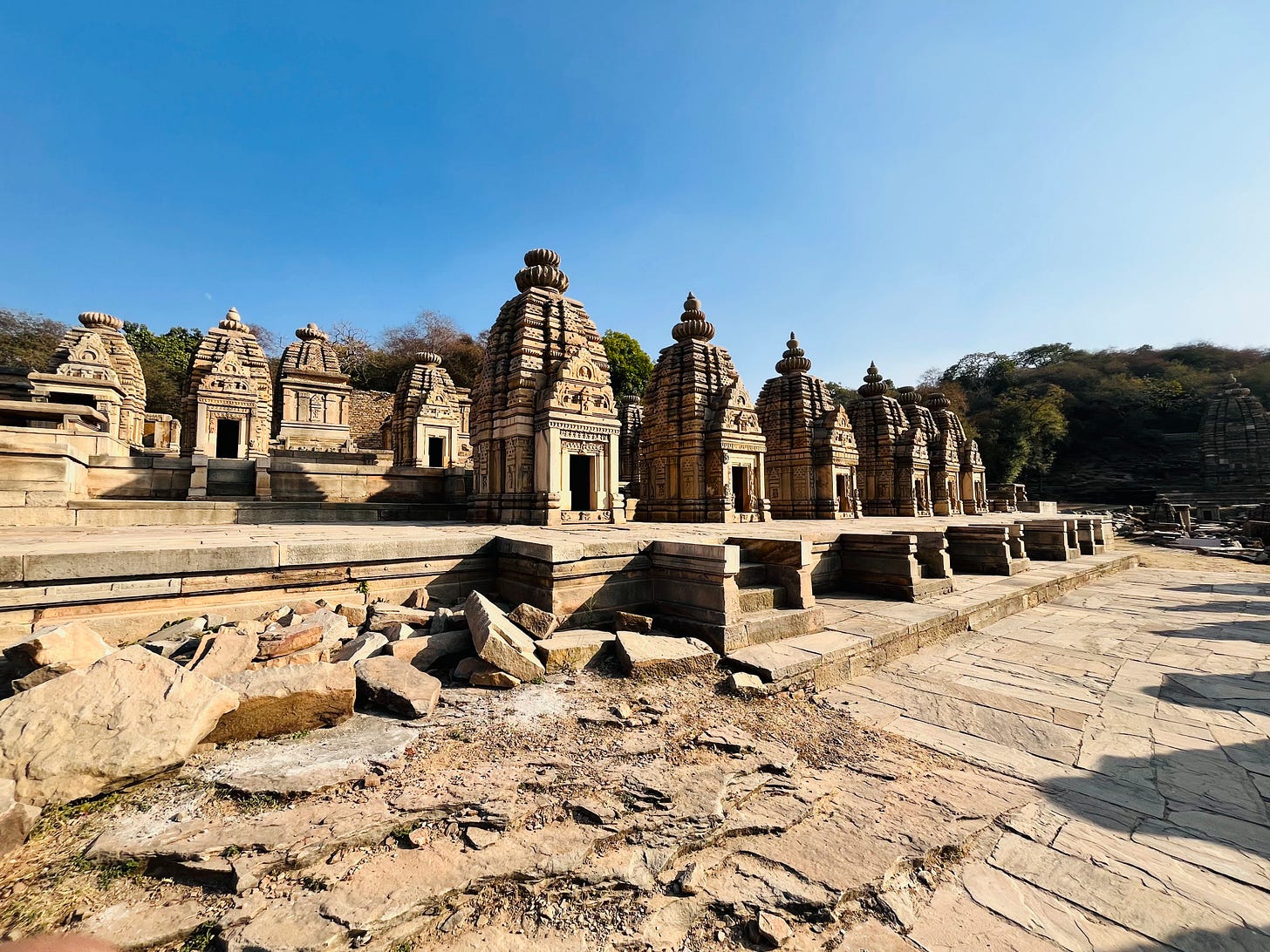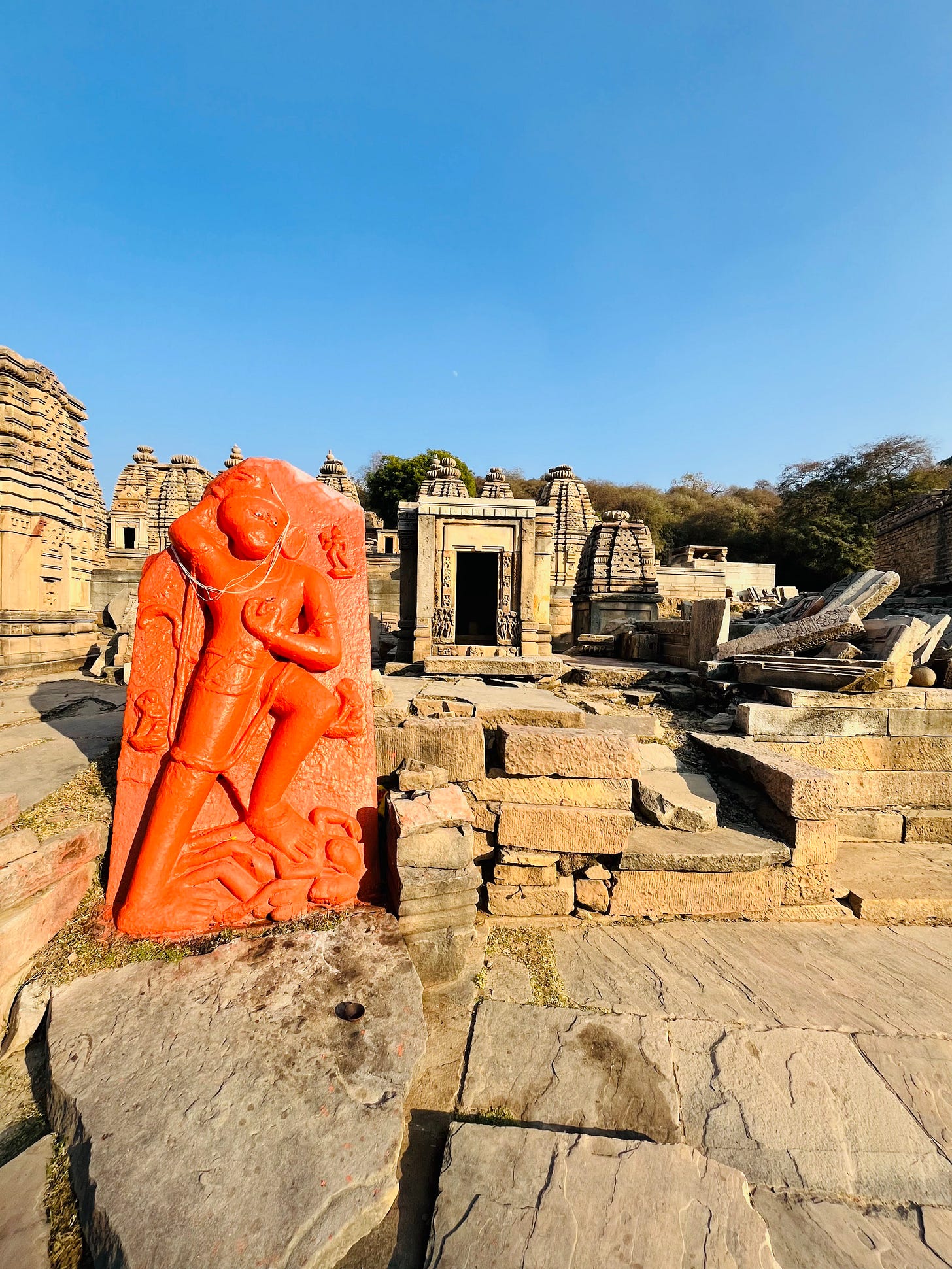The Forgotten Temples of Bateshwar
A Journey Through Ruins, Resilience, and Restoration in the Heart of Morena
I first heard of Bateshwar (also known as Batesara) while watching Ekaant on the Epic Channel—one of those rare gems of a show that plunges into the quiet, forgotten corners of Indian history.
The host wandered through serene ruins, each with its secrets and stories, and Bateshwar caught my attention: a sprawling complex of sandstone temples nestled in Morena.
It seemed unreal—a sacred haven reclaimed from both time and wilderness.
Sidenote: Morena, a district in the northernmost reaches of Madhya Pradesh, is a land of stark contrasts. Morena has been a land of legends. It is perhaps most famously associated with the tales of the Chambal dacoits—outlaws who once ruled these ravines, inspiring countless folk stories and even Bollywood films.
The idea lingered, nagging me, until I finally found myself driving toward Morena. Bateshwar is embedded in a terrain that’s rocky and surrounded by vegetation, as you make your way through the newly constructed pathway, the temples emerge like ghosts from the past, their outlines weathered but resolute.

These temples, I learned, date back to the 8th and 10th centuries CE, constructed during the Gurjara-Pratihara dynasty—a time when northern India was a canvas of architectural brilliance.
Built predominantly for Lord Shiva and Vishnu, they stand as testimony to the devotion of a bygone era. The craftsmanship is exquisite: delicate carvings of apsaras, mythical creatures, and celestial beings adorn the temple walls. The shikharas—curved spires crowning many of the temples—seem to reach for the heavens, a classic hallmark of early medieval northern Indian architecture.

Local legends are as plentiful as the stones here. Some say a king built these temples as an offering to Lord Shiva after a miraculous victory in battle. Others believe ascetics guided the design, ensuring it aligned perfectly with cosmic energies. The proximity to Mitawali and its Chausath Yogini temple, believed to have inspired the Indian Parliament’s design, adds another layer of intrigue.
But Bateshwar’s story is also one of dramatic ruin. When the Archaeological Survey of India (ASI) first arrived here, the temples were in a heartbreaking state. An earthquake centuries ago had reduced much of the complex to a chaotic pile of stones. Dense forests had swallowed the ruins, and the infamous dacoits of Chambal had claimed it as their stronghold. Wild animals roamed freely, and the temples were precariously close to disappearing forever.

Enter K.K. Muhammed, a passionate conservationist and former ASI official, who spearheaded Bateshwar’s restoration. With a mix of diplomacy and grit, he negotiated with the dacoits, convincing them to allow restoration work.
His team painstakingly sifted through the rubble, treating every stone as a piece of sacred history. It was like solving an intricate puzzle—identifying, cataloging, and reassembling the fragments to restore the temples to their former glory.
The restored sections of Bateshwar are nothing short of miraculous. Walking through the complex today, you can’t help but marvel at how seamlessly the old blends with the new.

Some temples stand proud and complete, their intricate carvings gleaming in the sunlight. Others remain partially restored, their missing pieces a reminder of nature’s wrath and human neglect.

Standing there, amid the hum of bees and the chirp of birds, specially peacocks, you feel the weight of history and the resilience of human effort. The air is thick with stories—of builders, warriors, and scholars who once roamed these grounds, and of conservationists who refused to let this marvel fade into oblivion.
Sidenote: Morena’s name is believed to derive from "Mor" (peacock) and "Raina" (land), symbolizing the natural beauty and abundance of this region. It is defined by deep gorges carved by the Chambal River and sprawling fields of mustard that burst into yellow during the winter months.
If you ever make your way to Bateshwar, take your time.
Let the temples speak to you, as they did to me. And maybe, like that episode of Ekaant, they’ll leave you with a story you’ll carry forever.




